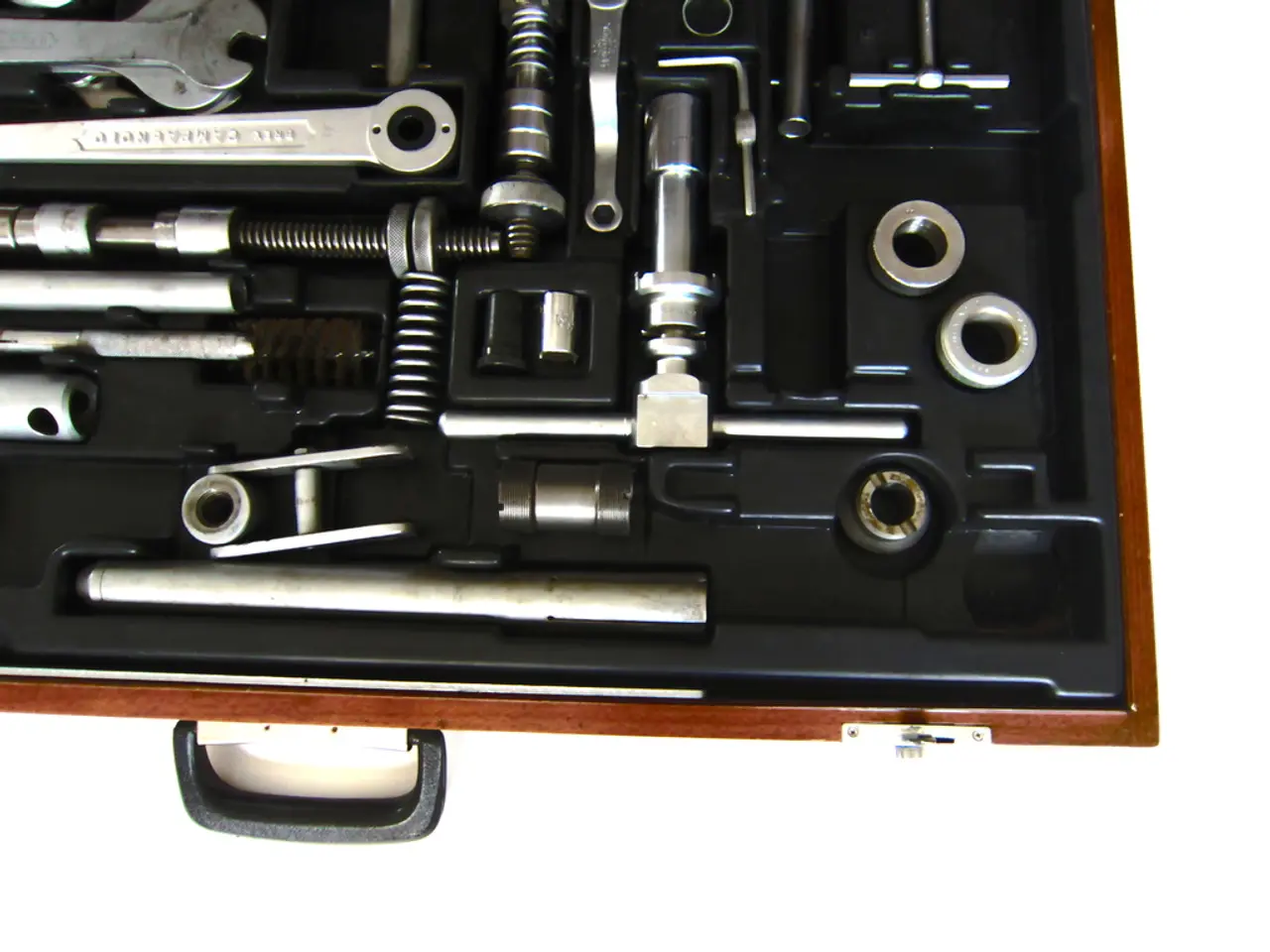Unveiled in India: The world's biggest single-piece 3D-printed rocket motor debuts
In a groundbreaking development for the global aerospace industry, Indian startup Agnikul Cosmos has revealed the world's largest single-piece 3D-printed rocket engine. Made entirely from Inconel, a high-performance superalloy, this engine is approximately one meter long and boasts an innovative design that eliminates the need for traditional welds, joints, and fasteners[1][2][3].
The engine, named Agnilet, was developed using a process that drastically reduces manufacturing complexity, production time, and potential failure points[1][2][3]. Agnikul Cosmos has been granted a US patent for the design and manufacturing method of this single-piece rocket engine, securing their innovation legally and marking a significant achievement for an Indian-origin aerospace design in the US[1][3].
This engine is printed as a single integrated component, from the fuel entry to the plume exit[1][3]. The use of Inconel ensures the engine can withstand extreme temperatures and pressures during rocket launches[1][2]. This advance supports India's growing presence in global space technology, with backing from organizations such as ISRO, IN-SPACe, TDB, and DST[3].
Agnikul Cosmos, a space-tech startup based in India, successfully test-fired the Agnilet in 2022[4]. The manufacturing process sets the engine apart from traditional rocket engines, as it is 3D printed as a single, fully integrated structure. This approach aims to solve the problem of complex manufacturing in rocket engine production, where hundreds of components could each lead to a failure[1][2][3].
India is carving out a prominent place in the global space industry through its development of advanced and cost-effective technologies. In August 2023, the nation successfully made history by soft landing a spacecraft on the Moon's south pole with a remarkably low budget of just $75 million[5]. Agnikul Cosmos's latest engine aims to enter the global market, with a focus on creating cheaper, faster, and more reliable rockets for on-demand space missions[6].
NASA has also experimented with 3D-printed engines in the past. NASA engineers at the Marshall Space Flight Center tested a 3D-printed Rotating Detonation Rocket Engine (RDRE), which fired for 251 seconds[7]. This achievement places Agnikul Cosmos at the forefront of large-scale additive manufacturing for orbital launchers worldwide[3].
Agnikul Cosmos's journey began in 2017 at the Indian Institute of Technology Madras, where it formed a partnership with IIT Madras that led to the inauguration of the Agnikul Rocket Factory-1, India's first private factory capable of building launch vehicles from start to finish, all under one roof[8].
[1] https://www.thehindu.com/sci-tech/science/agnikul-cosmos-develops-worlds-largest-single-piece-rocket-engine/article31395424.ece [2] https://www.business-standard.com/article/technology/agnikul-cosmos-develops-world-s-largest-single-piece-rocket-engine-122032201191_1.html [3] https://www.deccanherald.com/business/technology/agnikul-cosmos-develops-world-s-largest-single-piece-rocket-engine-1045759.html [4] https://www.livemint.com/technology/tech-news/agnikul-cosmos-successfully-tests-its-first-3d-printed-engine-agnilet-11646551698828.html [5] https://www.nasa.gov/feature/india-s-chandrayaan-3-mission-successfully-lands-on-the-moon-s-south-pole [6] https://economictimes.indiatimes.com/news/politics-and-nation/india-to-focus-on-creating-cheaper-faster-and-more-reliable-rockets-for-on-demand-space-missions/articleshow/91402176.cms [7] https://www.nasa.gov/feature/nasa-s-3d-printed-rocket-engine-fires-for-251-seconds [8] https://www.iitm.ac.in/news/agnikul-rocket-factory-1-inaugurated-at-iit-madras-campus-1604113429498.aspx
Technology continues to shape the future of the aerospace industry, as demonstrated by Agnikul Cosmos's world's largest single-piece 3D-printed rocket engine, the Agnilet. This engine, made from high-performance superalloy Inconel, was developed using additive manufacturing, a method that drastically reduces manufacturing complexity, production time, and potential failure points. The innovative design of the Agnilet eliminates the need for traditional welds, joints, and fasteners, setting it apart from traditional rocket engines. The use of technology and science has paved the way for Indian companies like Agnikul Cosmos to make significant contributions to the global space industry, disrupting traditional manufacturing methods through robotics and advanced materials.




